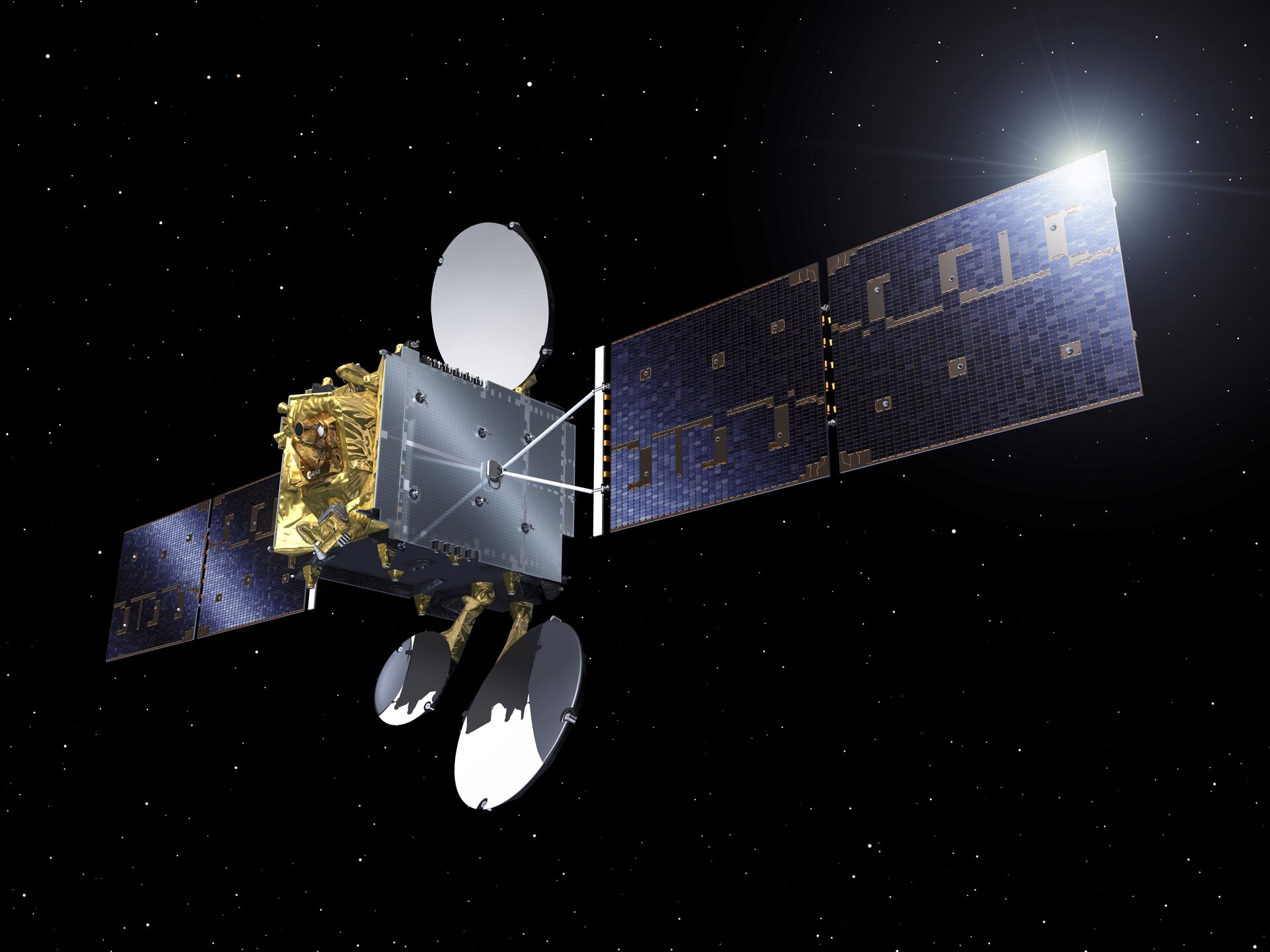EDRS-C ready to start service for ESA’s SpaceDataHighway
by Alun WilliamsAn ESA satellite, EDRS-C, has now completed its in-orbit commissioning review and is ready to start service, as part of the European Data Relay System (EDRS).

This system, dubbed the “SpaceDataHighway”, helps Earth-observing satellites to transmit large quantities of potentially life-saving data to Europe in near-real time. EDRS-C is the second operational node of the constellation.
Launched on 6 August 2019, the satellite has since manoeuvred into its geostationary orbit some 36 000 kilometres above Earth where it has been thoroughly tested during the past six months.
The ESA writes:
This geostationary position enables the communication satellite to maintain an almost constant connection with Earth-observation satellites that are closer to the planet’s surface and circle the Earth every 90 minutes or so.
The EDRS satellites use lasers to communicate with Earth-observation satellites and beam their data back to Europe in almost real time. Without them, there would be delays of up to 90 minutes.
The in-orbit commissioning review demonstrated that all EDRS-C systems perform well and that EDRS-C can link with Sentinel 2B, one of the Earth-observation satellites from the European Union’s Copernicus programme.
EDRS
The EDRS system will dramatically increase the speed of data transmission for satellites in lower orbits and airborne platforms to relay their information to use.
The system has Mission Operations Centres in Ottobrunn (DE) and Redu (BE), Spacecraft/Payload Control Centres in Oberpfaffenhofen (DE) and ground stations in Redu (BE), Harwell (GB) and two in Weilheim (DE).